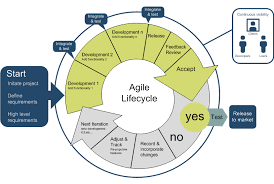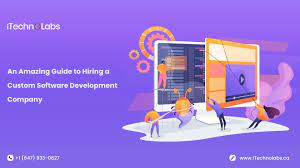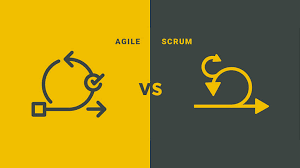The Waterfall Software Development Model
The waterfall model is a traditional approach to software development that follows a linear and sequential process. In this model, each phase of the software development life cycle must be completed before moving on to the next phase. The phases typically include requirements gathering, design, implementation, testing, and maintenance.
Key Characteristics of the Waterfall Model:
- Sequential Process: Each phase flows in a linear sequence without any overlap or iteration.
- Document-Driven: Extensive documentation is created at each stage to capture requirements, design decisions, and testing procedures.
- Rigidity: Changes are difficult to implement once a phase is completed, as the process does not easily accommodate modifications.
- Predictability: The waterfall model provides a clear roadmap of the project timeline and deliverables.
Advantages of the Waterfall Model:
- Clarity: The sequential nature of the model offers clear milestones and deliverables.
- Documentation: Extensive documentation helps in maintaining project knowledge and facilitating future maintenance.
- Predictability: Stakeholders have a clear understanding of project timelines and outcomes.
Disadvantages of the Waterfall Model:
- Rigidity: Changes late in the development process can be costly and time-consuming to implement.
- Lack of Flexibility: Limited room for iteration or adaptation to changing requirements.
- Risk Management: Risks may not be identified until later stages, leading to potential project delays or failures.
In conclusion, while the waterfall model offers structure and predictability in software development projects, its rigidity and lack of flexibility can pose challenges when dealing with evolving requirements or unforeseen issues. It is essential for organizations to evaluate their specific needs and project requirements before choosing a software development approach that best suits their goals.
5 Essential Tips for Successful Waterfall Software Development
- Clearly define requirements before starting the project.
- Follow a sequential approach with distinct phases (e.g., planning, design, implementation, testing).
- Ensure thorough documentation at each stage to track progress and changes.
- Limit scope changes once development has begun to maintain project timelines.
- Conduct comprehensive testing before moving on to the next phase to catch and address issues early.
Clearly define requirements before starting the project.
It is crucial to clearly define requirements before embarking on a project using the waterfall software development model. By establishing a detailed and comprehensive set of requirements at the outset, stakeholders can ensure that all aspects of the project are clearly understood and agreed upon. This initial step lays the foundation for the entire development process, helping to minimize misunderstandings, scope creep, and costly changes later in the project lifecycle. Clear requirements also enable teams to develop accurate project timelines, allocate resources effectively, and deliver a final product that meets stakeholders’ expectations.
Follow a sequential approach with distinct phases (e.g., planning, design, implementation, testing).
In waterfall software development, it is crucial to follow a sequential approach with distinct phases such as planning, design, implementation, and testing. By clearly defining and completing each phase before moving on to the next, teams can ensure that requirements are well-understood, designs are robust, implementations are accurate, and testing is thorough. This structured process helps in maintaining project clarity, enabling stakeholders to track progress effectively and ensuring that the final product meets the specified requirements.
Ensure thorough documentation at each stage to track progress and changes.
Ensuring thorough documentation at each stage of the waterfall software development process is crucial for tracking progress and changes effectively. Detailed documentation helps in capturing requirements, design decisions, testing procedures, and any modifications made throughout the project. By maintaining comprehensive records, teams can easily reference past stages, understand the project’s evolution, and facilitate seamless collaboration among team members. Clear and organized documentation also aids in risk management by providing insights into the project’s status and potential areas for improvement.
Limit scope changes once development has begun to maintain project timelines.
Limiting scope changes once development has begun is a crucial tip in waterfall software development to ensure the maintenance of project timelines. In the waterfall model, where each phase must be completed before moving on to the next, introducing significant scope changes mid-development can disrupt the sequential flow and lead to delays. By defining and freezing project requirements early on and adhering to them throughout the development process, teams can stay focused on meeting deadlines and delivering the project within the planned timeline. This practice helps in maintaining clarity, predictability, and overall project success in a waterfall software development environment.
Conduct comprehensive testing before moving on to the next phase to catch and address issues early.
To ensure the success of a software development project following the waterfall model, it is crucial to conduct comprehensive testing before advancing to the next phase. By thoroughly testing each component and functionality of the software, teams can identify and address issues early in the process, minimizing the risk of costly rework or delays down the line. This proactive approach not only helps in maintaining quality standards but also ensures that any potential defects are rectified promptly, leading to a more efficient and successful project delivery.




